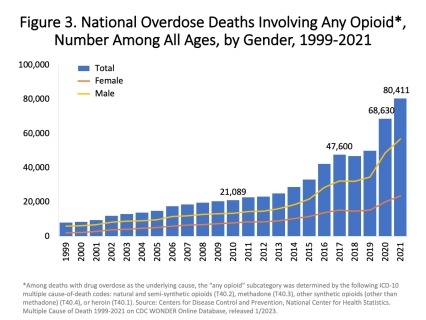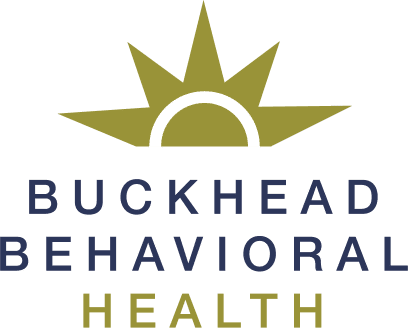Understanding the signs and symptoms of opioid addiction is crucial in helping you or your loved one make a decision to enter treatment. While each person’s experience with addiction is different, there are general physical, emotional, psychological, and behavioral signs to look out for.
If you believe you or your loved one are struggling with addiction to opiates, our opioid rehab in Atlanta may be able to help. Call us now at 470-460-6789 or verify your insurance.
Understanding Opioid Addiction
Opioids are a schedule II controlled substance that includes both prescription medications for pain relief (like morphine, oxycodone, hydrocodone) and illegal drugs (such as heroin and synthetic opioids like fentanyl). Opioids work by binding to opioid receptors in the brain, spinal cord, and other areas of the body. This binding action not only reduces the perception of pain but also triggers a release of dopamine, a neurotransmitter associated with pleasurable sensations.
While opioids are primarily used for pain-relieving properties, they also have a high potential for addiction. With continued use, the brain becomes accustomed to the presence of opioids. This leads to tolerance, where higher doses of the drug are needed to achieve the same level of pain relief or euphoria. Overtime, the brain’s chemistry adapts to the regular influx of opioids. This adaptation can make the functioning of the brain’s reward and pain pathways dependent on the drug, leading to physical dependence. Withdrawal from opioids once dependent can be physically and psychologically uncomfortable, prompting continued use to avoid these unpleasant symptoms. Alongside physical dependence, psychological addiction can develop. The desire to recreate the euphoric experiences and the need to avoid withdrawal symptoms can lead to compulsive drug-seeking behavior, a hallmark of addiction.
Signs and Symptoms of Opioid Addiction
Opioid addiction is typically characterized by a range of physical, behavioral, and psychological symptoms. While each person is different, recognizing these common symptoms is key to identifying and addressing opioid addiction.
Physical Symptoms
- Slowed Breathing: Opioids depress the respiratory system, leading to slower and shallower breathing.
- Constipation: A common side effect due to opioids slowing down the digestive system.
- Nausea and Vomiting: Especially prevalent in the early stages of use.
- Constricted Pupils: Opioids can cause noticeable narrowing of the pupils, known as miosis.
- Itching or Flushing: Some individuals experience itching or flushed skin.
- Changes in Eating Habits: This can include loss of appetite and weight loss.
- Opioid Withdrawal Symptoms: Including sweating, shaking, nausea, vomiting, diarrhea, and aches, appearing several hours after the last dose.
Behavioral Symptoms
- Doctor Shopping: Visiting multiple doctors to obtain more opioid prescriptions.
- Social Withdrawal: Isolating from friends and family or losing interest in activities once enjoyed.
- Neglecting Responsibilities: Failing to fulfill obligations at work, school, or home.
- Increased Secrecy or Lying: Being secretive about activities or dishonesty to hide drug use.
- Financial Problems: Unexplained lack of money, borrowing, or stealing, often to fund the drug habit.
- Illegal Activities: Engaging in illegal acts like forging prescriptions, buying drugs off the street, or stealing.
- Risk-Taking Behaviors: Engaging in dangerous activities, especially when under the influence.
Psychological Symptoms
- Cravings: A strong desire or urge to use opioids.
- Anxiety or Depression: Opioid use can exacerbate or lead to mental health disorders.
- Mood Swings: Rapid and inexplicable changes in mood.
- Irritability or Agitation: Especially when unable to access opioids.
- Decreased Motivation: Lack of interest or enthusiasm in activities or life in general.
- Impaired Judgment: Difficulty in making decisions or engaging in risky behaviors without considering the consequences.
- Obsession with Obtaining and Using Opioids: Spending a significant amount of time thinking about, obtaining, using, and recovering from the effects of opioids.

Opioid Statistics
Over the last two decades, opioid abuse and addiction has been a national epidemic and a public health concern. In 2024, opioid use continues to rise. An average of nearly 20,000 people die each year from opioid overdose.
Causes and Risk Factors of Opioid Addiction
Opioid addiction does not discriminate based on gender, race, or sexual preference, or socioeconomic status. When understanding the cause of addiction, there may not just be one factor, but a multitude of factors that contribute, including the following:
Genetics: Genetics can play a role in an individual’s susceptibility to addiction. Those with a family history of substance abuse are at higher risk of developing an addiction.
Existing Mental Health Disorders: Those with existing mental health disorders such as depression, anxiety, or bipolar are at an increased risk of developing opioid addiction.
Environmental Factors: Certain environmental factors such as peer pressure, stress, low socioeconomic status, and exposure to groups that promote drug use can put an individual at use for opioid addiction.
Traumatic Experiences: Those with a history of trauma, physical or emotional abuse are at an increased risk of addiction.
Early Exposure to Drug Use: Early exposure to drug use and opioids, especially in teenagers and young adults can increase the risk of addiction later in life.
Effects of Opioid Addiction
As opioid addiction progresses, it can have multiple effects on an individuals health, personal life, and society. These effects can be far-reaching and devastating. Some effects can include:
- Physical Effects: Physical Effects including respiratory depression, constipation, and an increased risk of infectious diseases such as HIV and Hepatitis C due to needle sharing. Long-term effects can result in hormonal imbalances and a weakened immune system.
- Cognitive Impairment: Long-term opioid abuse can lead to cognitive impairment affecting memory, attention, and decision-making capabilities.
- Relationships: Opioid addiction can create strain within family systems, friends, and colleagues leading to social isolation, and loss of relationships.
- Impact on Children and Families: Addiction doesn’t just affect the person using. Families typically face significant emotional and psychological stress.
- Overdose and Death: Opioid addiction results in increased tolerance. Overtime a user requires the more of the drug to feel the same euphoric effects, which can result in opioid overdose and in some cases, death.

Opioid Withdrawal and Overdose
Withdrawal from opioids is a physically and psychologically uncomfortable process that occurs when a person who is dependent on opioids reduces or stops their use of the drug. This happens because the body has adapted to the presence of the drug and reacts when it’s no longer available. The onset of withdrawal symptoms begins a few hours from the last dose and a person going through opioid withdrawal can experience the following symptoms:
- Agitation and anxiety
- Muscle aches
- Insomnia
- Runny nose
- Sweating
- Yawning
- Diarrhea
- Dilated pupils
- Nausea and vomiting
Opioid overdose occurs as a result of excessive opioid concentrations in the central nervous system, particularly affecting the respiratory and neurological functions. If you or a loved one are experiencing any of these symptoms, dial 911 immediately. Key symptoms to look out for include:
- Respiratory depression: This is the most dangerous symptom and can be life-threatening. It involves slow, shallow, or even stopped breathing. Opioids depress the brain’s respiratory centers, which can lead to insufficient oxygen reaching the brain (hypoxia).
- Pinpoint pupils: One of the hallmarks of opioid overdose is extremely small, constricted pupils, often referred to as “pinpoint pupils.”
- Unconsciousness or Altered Level of Consciousness: The person may be unresponsive, unable to wake up, or only respond to stimuli such as a loud noise or pain.
- Limp Body: The person’s body may appear limp and they may have difficulty moving.
- Pale, Clammy Skin: Their skin may feel cold and clammy to the touch.
- Bluish Lips or Fingernails: This is a sign of oxygen deprivation and is more visible in lighter-skinned individuals.
- Choking or Gurgling Sounds: This can indicate that the person’s airway is partially obstructed.
Take Back Control:
Contact Us Now
Addiction and mental health disorder effects the lives of millions of Americans each year. Contact Buckhead Behavioral Health today to get the help you deserve.
Facility Photo Gallery
Find Opioid Rehab and Addiction Treatment Today
If you or someone you know is struggling with opioid addiction, it’s crucial to understand that help is available and recovery is possible. Overcoming addiction is a journey that requires courage, commitment, and support, but it’s a journey you don’t have to make alone. At Buckhead Behavioral Health, we offer opioid addiction treatment in the Georgia area for those seeking help. Verify your insurance now or call us at (470) 460-6789
CONTACT US
We Are Always Here For You
We want you to live the sober, healthy life that you deserve. That’s why we want you to get the help you need
Fill out the form below. And we’ll get back to you as soon as we can.
























